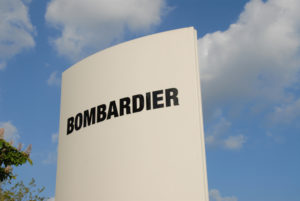 An industry force for more than 30 years and a trusted name in aviation, Bombardier is saying goodbye to the commercial sector. Announced in June 2019, the company has officially divested the last of its regional jet business to Mitsubishi Heavy Industries. It’s the final chapter in a story of dismantling that’s been happening since 2015. While sad, it gives Bombardier time to focus more on what it does best ― including private aviation.
An industry force for more than 30 years and a trusted name in aviation, Bombardier is saying goodbye to the commercial sector. Announced in June 2019, the company has officially divested the last of its regional jet business to Mitsubishi Heavy Industries. It’s the final chapter in a story of dismantling that’s been happening since 2015. While sad, it gives Bombardier time to focus more on what it does best ― including private aviation.
A look back at its roots
Bombardier’s rise and fall in the commercial aviation sector is an intriguing story. The company actually got its start in specialty vehicles, producing sleds and plows for winter rescue operations. It wasn’t until 1986 when the company took to the skies. A condensed history shows a two-decade sprint to the forefront of the market, as a leading name in regional jet production:
- In 1986, Bombardier acquired Canadair for $120 million (Canadian dollars)
- Shortly after, in 1989, they acquired Short Brothers ― an aircraft manufacturer
- In 1992, the company acquired the newly bankrupt, highly popular Learjet brand
- In 2008, Bombardier forayed into in-house manufacturing with the Dash 8 Series
The late 2000s were the apex of Bombardier’s leadership in commercial aviation. The Dash 8 Series boomed in popularity; alongside legacy models inherited from Learjet. The company even weathered the economic downturn of 2008 with relative ease. It wasn’t until 2015 when the company’s problems reared.
The downward spiral
 In 2015, the company reported a net debt of more than $9 billion and freefalling revenues. Investors, upon seeing the financial filings, obliterated Bombardier’s stock, sending it tumbling. The small glimmer of hope ― the company’s newly introduced CS100 series models ― was quickly extinguished, as well.
In 2015, the company reported a net debt of more than $9 billion and freefalling revenues. Investors, upon seeing the financial filings, obliterated Bombardier’s stock, sending it tumbling. The small glimmer of hope ― the company’s newly introduced CS100 series models ― was quickly extinguished, as well.
After debuting the CS100 series and taking orders from major airliners such as Delta, Bombardier was hit with a formal complaint by rival Boeing. Boeing claimed the company was using Canadian subsidies to undercut market pricing. Facing tariffs of nearly 250%, sales of the CS100 series tanked, along with Bombardier’s commercial outlook.
Divestitures began shortly thereafter. Airbus acquired a majority stake in the CS100 series and quickly changed the name to the Airbus A220. Then, in 2018, Bombardier sold its flagship Dash 8 program. Now, with the sale of its remaining assets to Mitsubishi for $550 million, Bombardier the commercial aviation company exists no more.
What’s the focus now?
 Bombardier’s exit from commercial aviation turns an oligopoly into a duopoly, between Airbus and Boeing. But if it’s not going to make regional jets anymore, what is Bombardier going to do?
Bombardier’s exit from commercial aviation turns an oligopoly into a duopoly, between Airbus and Boeing. But if it’s not going to make regional jets anymore, what is Bombardier going to do?
Turn to private aviation, of course! The company’s Learjet, Challenger, and Global Series aircraft are major sellers in the private market, and the company continues to see tremendous success in this sector. With more than 4,700 jets in operation over 112 countries, Bombardier is the third-largest business jet manufacturer in the world.
With its hugely popular Global 7500 and anticipated Global 8000 jets, Bombardier is showing that it’s ready to succeed in private aviation. Closing the door on commercial aviation ensures a singular focus.
The expert jet brokers at L & L International are here to help you acquire the perfect jet. Need to sell your jet? We can assist with that, too.
Contact the private aviation professionals online, at
sales@L-Lint.com, or at
+1 (305) 754-3313.
 The General Aviation Manufacturers Association (GAMA) has released its end-of-year report on the state of aircraft shipments for 2018. And while a glance at the first quarter of last year might set the bar low for expectations, the remainder of the year and especially the fourth quarter yielded numbers that paint a healthy picture of private aviation headed into 2019.
The General Aviation Manufacturers Association (GAMA) has released its end-of-year report on the state of aircraft shipments for 2018. And while a glance at the first quarter of last year might set the bar low for expectations, the remainder of the year and especially the fourth quarter yielded numbers that paint a healthy picture of private aviation headed into 2019.
Breaking down the GAMA report
While the GAMA report focuses exclusively on aircraft deliveries, there’s a tremendous amount of data to glean from the raw numbers. It’s also a great status indicator for the industry as a whole, since the report focuses on the point of delivery instead of the point of order.
For example, 703 new business jets were delivered to customers in 2018. More impressive was the growth over the year — only about 19% of deliveries took place in the first quarter, as opposed to nearly 37% in the fourth quarter. Total deliveries were also up about 3.8% in 2018 over 2017. The total value of the private aircraft market in 2018 was about $20.6 billion.
Most impressive in this report, however, is data showing a rise in private aviation across all categories: business jets, turboprops, pistons, and helicopters. It’s the first such instance of growth in five years and the strongest surge in deliveries in more than a decade!

Looking closer at the trends
Thanks to the individual categories broken out by the GAMA report, a few trends also make themselves evident:
- Textron is the top manufacturer of 2018, according to the report. This is no surprise, as its Citation family of jets has been gaining momentum over the past several years. With 188 total aircraft delivered in 2018, the industry leader is likely to see a strong 2019 as well thanks to its Latitude model, which accounted for 57 of the company’s deliveries last year.
- Despite having the most total models delivered, Textron actually comes second to Bombardier in terms of the most popular model of 2018. The Challenger 350 remains the best-selling private jet for the second year in a row (2017, 2018), with 60 deliveries in 2018 — narrowly beating out Textron’s Latitude (57).
- Despite growing customer interest in long-range jets — as evidenced by new models such as the Bombardier Global 7500 — there’s actually evidence in the rise of turboprop aircraft. While the low cost of turboprops has always been appealing, 601 new total turboprop deliveries in 2018 signal something more. Turboprops and piston aircraft deliveries both rose 5% last year.
There’s no doubt 2018 was a strong year for all sectors of the private aviation market. The only question now is, Will this momentum continue through 2019 or stall out?
Predictions for 2019
 Analysts have high hopes about private jet deliveries in 2019, expecting them to increase as much as 10%. But what will drive such a strong surge on the tail end of an already-great 2018?
Analysts have high hopes about private jet deliveries in 2019, expecting them to increase as much as 10%. But what will drive such a strong surge on the tail end of an already-great 2018?
Some believe it could be the growing accessibility of private charters and flight-sharing services.
Others predict a lag in the used jet market, which will push prospective buyers into the realm of new jets.
There’s also the newest wave of jets to consider, which includes the already best-selling Bombardier Global 7500 and the Cessna Citation Longitude. Each of these jets is the pinnacle of modern technology and appealing to owners who want the newest and best option.
The general consensus is that the private aviation market will continue to bolster itself in 2019. It could very well be a record-setting year, with so many favorable tailwinds blowing.
The expert jet brokers at L & L International are here to help you acquire the perfect jet. Need to sell your jet? We can assist with that, too.
Contact the private aviation professionals online, at
sales@L-Lint.com, or at
+1 (305) 754-3313.
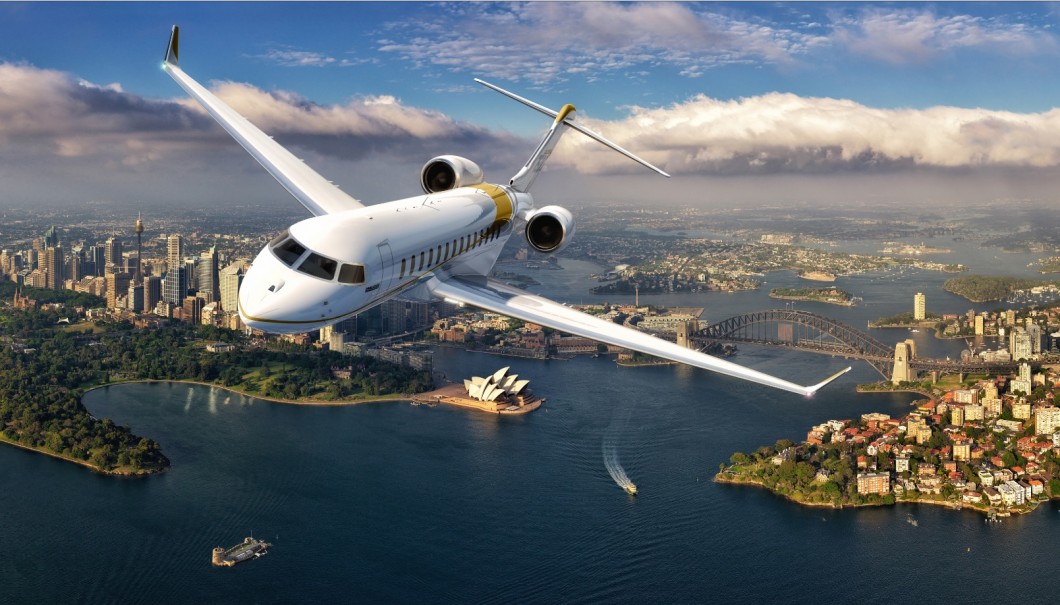 Bombardier has never been one to disappoint when it comes to producing the best of the best. For decades, this manufacturer has continually set new benchmarks not only in what’s possible from private aircraft but also in what’s expected of them. With the recent launch of the Bombardier Global 7500, the company has yet again inked its name in history with a record-setting, industry-changing jet.
Bombardier has never been one to disappoint when it comes to producing the best of the best. For decades, this manufacturer has continually set new benchmarks not only in what’s possible from private aircraft but also in what’s expected of them. With the recent launch of the Bombardier Global 7500, the company has yet again inked its name in history with a record-setting, industry-changing jet.
A look at the Global 7500
The Global 7500 is a perfect marriage of practicality and luxury. It’s designed for the world of business on a global scale, catering to the luxury demands of the business elite.
The aircraft itself features a cabin segmented into four separate areas, great for business or leisure. The Nuage seat completely redefines comfort, enabling deep recline potential and plenty of neck and lumbar support. Turbo heating and cooling ensure total comfort at all times. Best of all, the cabin is completely controlled by touch technologies! In addition, it accommodates 19 comfortably.
On its luxury and aesthetic merits alone, the Global 7500 is a must-have for any owner seeking the pinnacle of excellence.
[su_row][su_column] [/su_column] [su_column]
[/su_column] [su_column]

[/su_column] [/su_row]
It passes more than just the eye test
Those familiar with Bombardier jets know they do a whole lot more than look great on the tarmac. The Global 7500 is no exception. In fact, this jet is now the owner of a world record: the world’s longest flight by a purpose-built business jet. It clocked 8,152 nautical miles from Singapore to Phoenix, direct. What’s more, it landed with 4,300 pounds of fuel — more than enough for an additional 90 minutes of flight time!
The record-setting flight shows off truly phenomenal potential by the Global 7500. The Singapore to Phoenix flight is just one example of its range. In a press release by the company, David Coleal, President of Bombardier Business Aircraft, lauded the jet:
“The Global 7500 aircraft was built to break all the records. It achieved the industry’s longest mission ever in business aviation after only two months in service. We’ve demonstrated its unequaled long-range and high-speed capabilities, but also its ability to break records confidently with healthy fuel reserves remaining, once again, confirming its unsurpassed performance to customers.”
With most of the globe open to a direct flight, Bombardier is giving international travelers an easier way to get to where they’re going. Potentially popular flight tracks include the ability to go from Miami to Dubai, New York to Hong Kong, Los Angeles to New Delhi, and more — all direct!

A growing trend in long-range aviation
Bombardier’s Global 7500 may hold the record for longest flight today, but it’s a record that’ll undoubtedly face challengers soon.
 Bombardier’s own Global 8000 (which has faced delays) is expected to deliver flight mileage equal to its name. Gulfstream’s G650ER — which can log 7,500 nautical miles comfortably — has made a similar trip (Singapore to San Francisco) at a faster clip. Other manufacturers are also focusing on long-range jets, following the trend of global travel demands.
Bombardier’s own Global 8000 (which has faced delays) is expected to deliver flight mileage equal to its name. Gulfstream’s G650ER — which can log 7,500 nautical miles comfortably — has made a similar trip (Singapore to San Francisco) at a faster clip. Other manufacturers are also focusing on long-range jets, following the trend of global travel demands.
The world is getting smaller, especially for jet owners. Doing business across countries on a global scale is less of a burden than ever, thanks to jets that have little trouble traversing long distances. It’s a trend we’re likely to see more of, and Bombardier’s Global 7500 won’t be the last jet to break a distance record.
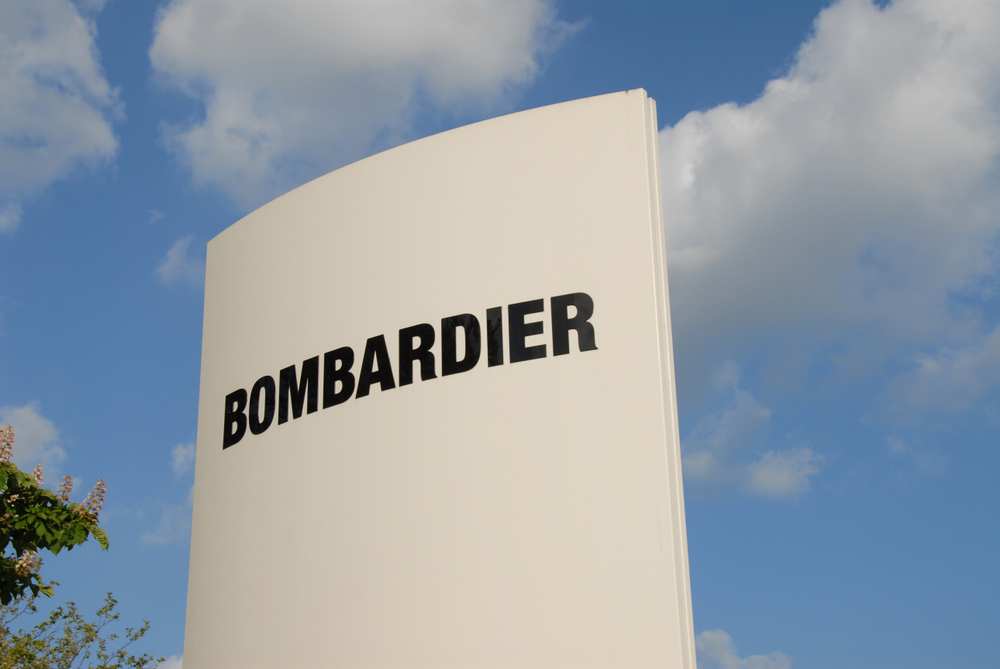
 An industry force for more than 30 years and a trusted name in aviation, Bombardier is saying goodbye to the commercial sector. Announced in June 2019, the company has officially divested the last of its regional jet business to Mitsubishi Heavy Industries. It’s the final chapter in a story of dismantling that’s been happening since 2015. While sad, it gives Bombardier time to focus more on what it does best ― including private aviation.
An industry force for more than 30 years and a trusted name in aviation, Bombardier is saying goodbye to the commercial sector. Announced in June 2019, the company has officially divested the last of its regional jet business to Mitsubishi Heavy Industries. It’s the final chapter in a story of dismantling that’s been happening since 2015. While sad, it gives Bombardier time to focus more on what it does best ― including private aviation. In 2015, the company reported a net debt of more than $9 billion and freefalling revenues. Investors, upon seeing the financial filings, obliterated Bombardier’s stock, sending it tumbling. The small glimmer of hope ― the company’s newly introduced CS100 series models ― was quickly extinguished, as well.
In 2015, the company reported a net debt of more than $9 billion and freefalling revenues. Investors, upon seeing the financial filings, obliterated Bombardier’s stock, sending it tumbling. The small glimmer of hope ― the company’s newly introduced CS100 series models ― was quickly extinguished, as well.
 Bombardier’s exit from commercial aviation turns an oligopoly into a duopoly, between Airbus and Boeing. But if it’s not going to make regional jets anymore, what is Bombardier going to do?
Bombardier’s exit from commercial aviation turns an oligopoly into a duopoly, between Airbus and Boeing. But if it’s not going to make regional jets anymore, what is Bombardier going to do?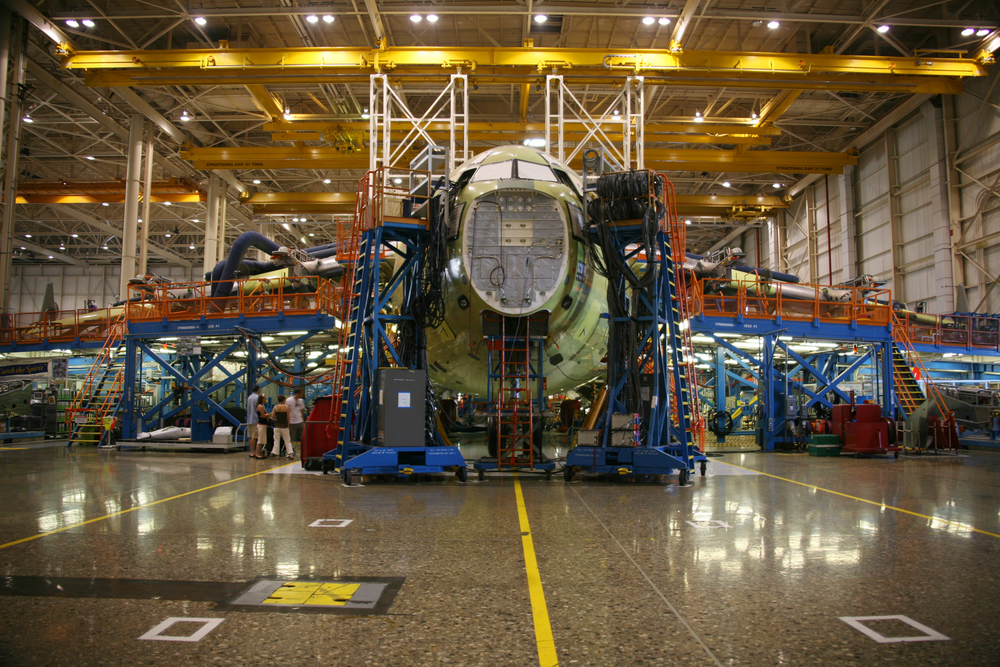
 The General Aviation Manufacturers Association (GAMA) has released its end-of-year report on the state of aircraft shipments for 2018. And while a glance at the first quarter of last year might set the bar low for expectations, the remainder of the year and especially the fourth quarter yielded numbers that paint a healthy picture of private aviation headed into 2019.
The General Aviation Manufacturers Association (GAMA) has released its end-of-year report on the state of aircraft shipments for 2018. And while a glance at the first quarter of last year might set the bar low for expectations, the remainder of the year and especially the fourth quarter yielded numbers that paint a healthy picture of private aviation headed into 2019.
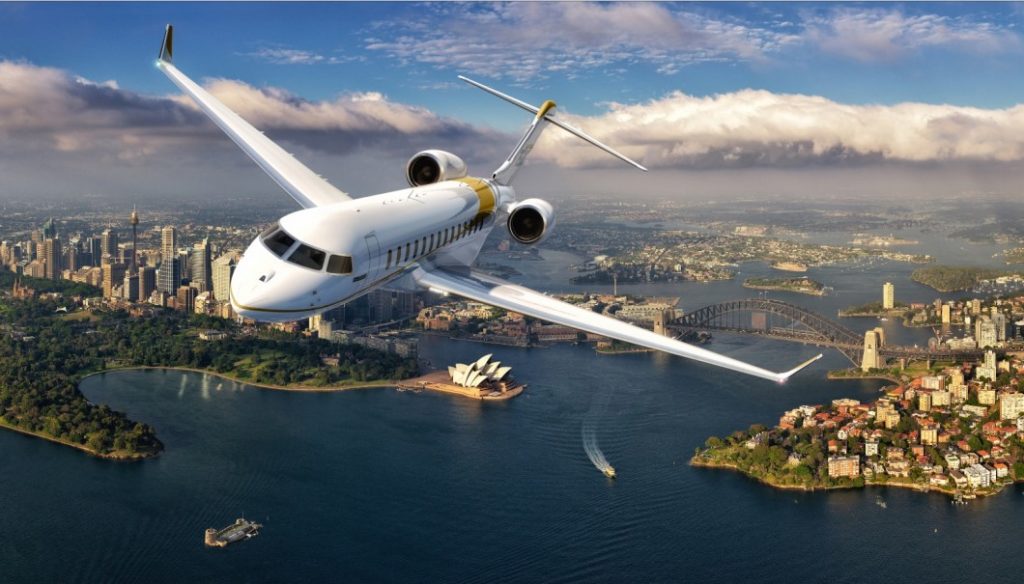
 Bombardier has never been one to disappoint when it comes to producing the best of the best. For decades, this manufacturer has continually set new benchmarks not only in what’s possible from private aircraft but also in what’s expected of them. With the recent launch of the Bombardier Global 7500, the company has yet again inked its name in history with a record-setting, industry-changing jet.
Bombardier has never been one to disappoint when it comes to producing the best of the best. For decades, this manufacturer has continually set new benchmarks not only in what’s possible from private aircraft but also in what’s expected of them. With the recent launch of the Bombardier Global 7500, the company has yet again inked its name in history with a record-setting, industry-changing jet. [/su_column] [su_column]
[/su_column] [su_column]

